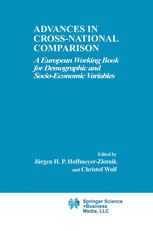

Most ebook files are in PDF format, so you can easily read them using various software such as Foxit Reader or directly on the Google Chrome browser.
Some ebook files are released by publishers in other formats such as .awz, .mobi, .epub, .fb2, etc. You may need to install specific software to read these formats on mobile/PC, such as Calibre.
Please read the tutorial at this link: https://ebookbell.com/faq
We offer FREE conversion to the popular formats you request; however, this may take some time. Therefore, right after payment, please email us, and we will try to provide the service as quickly as possible.
For some exceptional file formats or broken links (if any), please refrain from opening any disputes. Instead, email us first, and we will try to assist within a maximum of 6 hours.
EbookBell Team

4.4
12 reviewsThe book consists of five parts and a concluding chapter. Part 1 covers general problems and presents solutions for the harmonisation of data from different national and/or cultural contexts. In the second part EUROSTAT and ESOMAR present their established standard instruments. Tested instruments each covering one variable (i.e. occupation, education) are presented in the third part. The fourth part again includes suggested tools for the harmonisation of single variables for which standardised instruments are not yet available (i.e. age, religion, ethnicity, household, family, income). The last part presents selected empirical analyses demonstrating the use and fruitfulness of instruments presented before.
This book is mainly written for two groups. First, researchers and practitioners involved in comparative research in Europe. Second, researchers working with data of the statistical offices of European countries and data from institutions of the European Union.